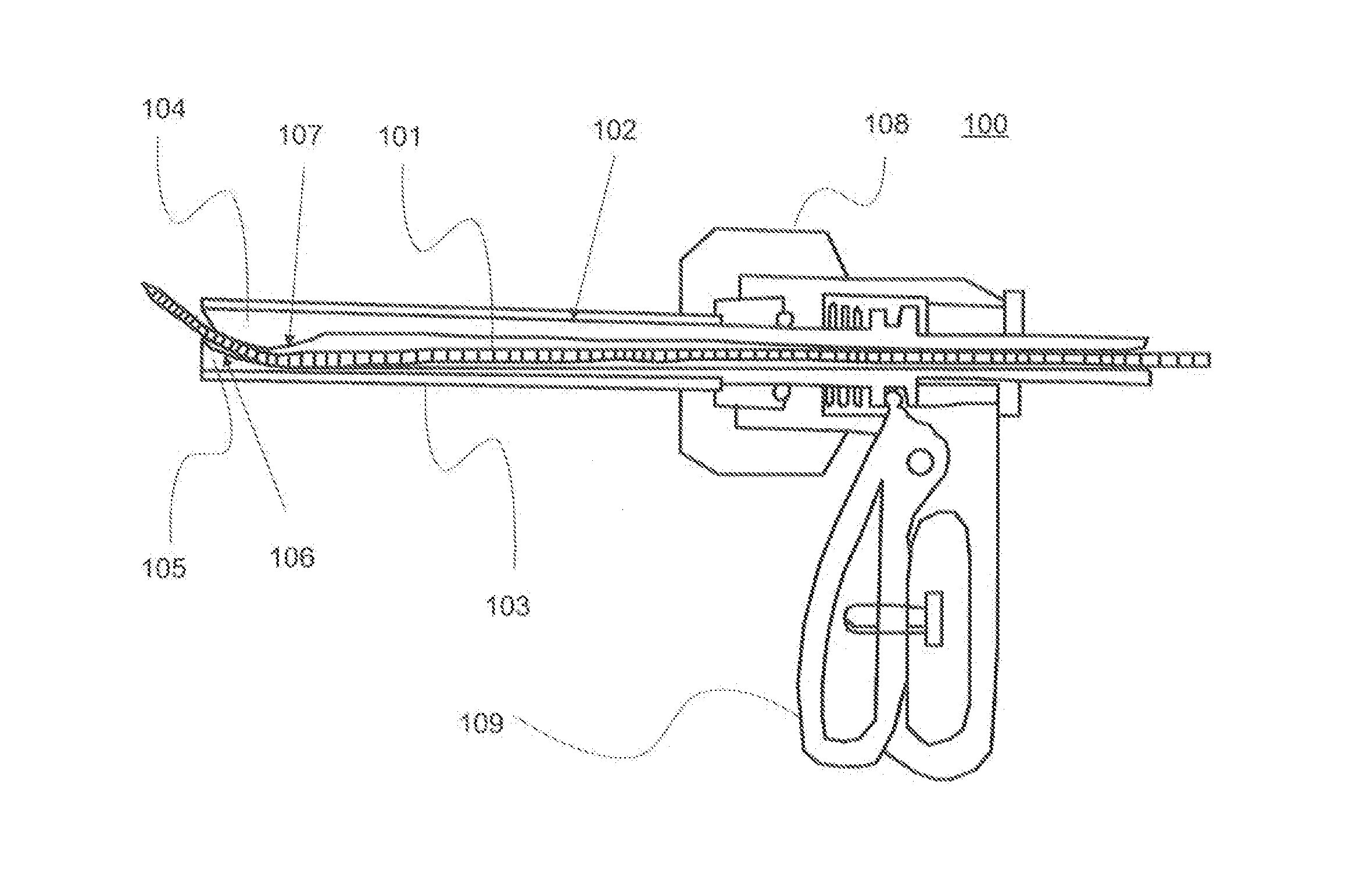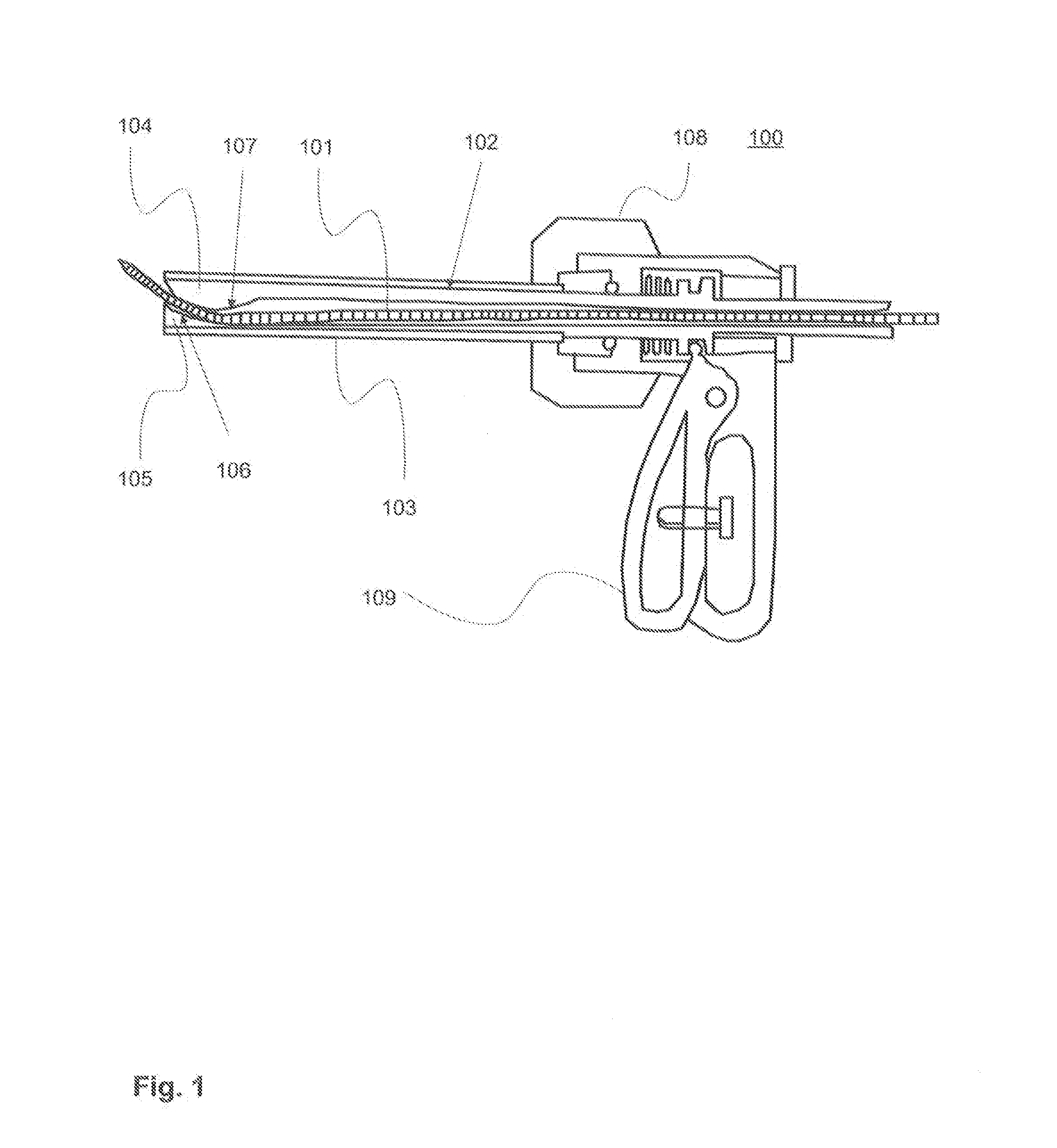Bone drill
a drill bit and bone technology, applied in the field of bone drills, can solve the problems of difficult to guide a drill bit inside a bone, more difficult, and the drill component to jam, so as to reduce the number of drill bits, reduce the strain on the subject, and accelerate the operation
- Summary
- Abstract
- Description
- Claims
- Application Information
AI Technical Summary
Benefits of technology
Problems solved by technology
Method used
Image
Examples
first embodiment
[0030]In the first embodiment, the drill-component shield is tubular and open at the end. In the present case, the term open “end” of the tubular shield refers to its “distal end”, or the point of the shield. This is the end of the shield that is farthest from the user of the drill. In particular, the end in question faces away from the user. Most appropriately, the open portion of the end in question faces in a direction 180 degrees in the opposite direction compared to the proximal end of the tubular shield (i.e. the end closest to the user).
[0031]In a preferred embodiment, the shield is equally thick over the entire area of the tubular part, including the end, i.e. it has a constant outer diameter throughout.
[0032]The distal end is arranged to be pushed into a drill hole or channel made in the bone, which means that, at it, the external diameter of the drill-component shield is smaller than the internal diameter of the drill hole or channel in question. The external diameter of t...
second embodiment
[0039]In the bone drill, the guide arrangement can be changed in order to change the turning angle. The turning angle is then specific to each guide arrangement.
third embodiment
[0040]In the bone drill, the guide arrangement is inside the drill-component shield and, in the guide arrangement, there is a slide component and a counter-component, and the drill component is arranged to run between the slide component and the counter-component, in such a way that they alter the turning angle of the drill component.
PUM
 Login to View More
Login to View More Abstract
Description
Claims
Application Information
 Login to View More
Login to View More - R&D
- Intellectual Property
- Life Sciences
- Materials
- Tech Scout
- Unparalleled Data Quality
- Higher Quality Content
- 60% Fewer Hallucinations
Browse by: Latest US Patents, China's latest patents, Technical Efficacy Thesaurus, Application Domain, Technology Topic, Popular Technical Reports.
© 2025 PatSnap. All rights reserved.Legal|Privacy policy|Modern Slavery Act Transparency Statement|Sitemap|About US| Contact US: help@patsnap.com



